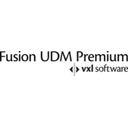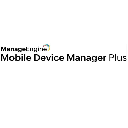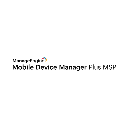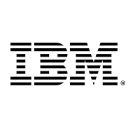Mobile Device Management (MDM) software: purchase guide
Mobile Device Management Software in 2025: Total Control, Seamless Mobility
What Is Mobile Device Management Software
Mobile Device Management (MDM) software allows organizations to monitor, manage, and secure smartphones, tablets, laptops, and other endpoints across their entire workforce. In a world increasingly driven by mobile work and hybrid teams, MDM has become a critical piece of the IT security and productivity puzzle.
At its core, MDM software ensures that devices—whether company-issued or BYOD (Bring Your Own Device)—adhere to organizational policies. It allows for remote setup, application management, real-time tracking, and even the ability to wipe a device entirely if it's lost or compromised.
In 2025, MDM solutions go far beyond basic control. They integrate with identity providers, offer zero-touch enrollment, enable location-aware policies, and support unified endpoint management (UEM) that covers mobile, desktop, and even IoT devices in a single dashboard.
Why MDM Matters More Than Ever
With the explosion of mobile workforces, every device is a potential gateway to sensitive company data. Unsecured endpoints are among the top causes of data breaches, and managing devices manually is no longer feasible at scale.
MDM software allows IT teams to enforce encryption, push security updates, and ensure compliance without ever touching the device physically. Whether a team member is using an iPhone in Paris or an Android tablet in São Paulo, the same standards apply.
This level of oversight also helps streamline operations—automating device provisioning, restricting access to unapproved apps, and ensuring that corporate data can be wiped instantly if needed. That’s not just convenience—it’s business continuity and legal protection.
Why It’s Strategic for Your Business
The modern workplace is mobile-first. From field technicians to remote executives, employees expect secure, frictionless access to tools and data. MDM software ensures this while protecting the business against unnecessary risk.
Beyond IT, the benefits touch every corner of the organization. HR can onboard devices in minutes. Finance can predict costs more accurately. Compliance teams can sleep better knowing there's full traceability and control. And leadership gets the assurance that sensitive data won’t walk out the door in someone’s pocket.
How to Choose the Right Mobile Device Management Software
The right MDM solution depends on the size of your organization, the diversity of your devices, and your regulatory environment.
Start by checking OS compatibility. Your platform should work seamlessly across Android, iOS, macOS, and Windows—especially if your workforce uses a mix of personal and company-issued devices.
Look for features like zero-touch enrollment, remote locking and wiping, app whitelisting/blacklisting, geofencing, and automated compliance rules. These aren’t bells and whistles—they’re necessities in 2025.
Equally important is user experience. IT administrators need intuitive dashboards, real-time alerts, and granular reporting. Meanwhile, end users should have a seamless onboarding process that doesn’t require IT hand-holding every step of the way.
Finally, consider scalability and support. Does the provider offer cloud-based and on-premise deployment? Is support responsive during critical incidents? Can it integrate with your existing identity and security infrastructure?
How to Implement MDM Effectively
Start by identifying the types of devices and users that need to be managed. Will you cover just smartphones, or include laptops and tablets too? Are devices owned by the company or employees?
Create a clear policy framework. Define what’s allowed, what’s restricted, and what actions should be automated. Then configure your MDM platform accordingly—setting up policies for different user roles, departments, and geographies.
Pilot the implementation with a specific team. Gather feedback, monitor performance, and refine workflows before rolling it out company-wide. Ensure training materials are available and that IT teams are equipped to support both users and compliance.
Keep reviewing and evolving your setup. The device landscape changes rapidly—your MDM strategy should too.
Top Mobile Device Management Software in 2025
| Software |
Key Features |
Pricing |
Trial & Demo |
Best For |
| Fusion UDM Premium |
Remote wipe, app control, policy management |
Pricing on request |
✅ Free version
✅ Free trial
✅ Free demo |
Companies needing a full-featured MDM with strong remote capabilities |
| SureMDM |
Device tracking, real-time monitoring, compliance tools |
Pricing on request |
✅ Free version
✅ Free trial
✅ Free demo |
IT teams seeking robust mobile monitoring and remote control |
| Valet |
Device enrollment, configuration, app deployment |
Pricing on request |
✅ Free version
✅ Free trial
✅ Free demo |
SMBs wanting a simple but secure way to manage devices |
| Clyd |
Inventory control, usage monitoring, role-based access |
Pricing on request |
✅ Free version
✅ Free trial
✅ Free demo |
Organizations that need basic MDM with ease of use |
| Mobile Device Manager Plus |
Unified device management, multi-platform support, audit logs |
From $495.00/year |
✅ Free version
✅ Free trial
✅ Free demo |
Mid to large businesses looking for enterprise-grade MDM features |
MDM Trends to Watch in 2025
The rise of AI-powered automation is reshaping how MDM works. Platforms now use machine learning to flag risky behavior, suggest policy adjustments, and even automate enforcement in real time. This allows teams to move from reactive management to proactive security.
There’s also a growing shift toward Unified Endpoint Management (UEM), which merges MDM with desktop, laptop, and IoT device management. Businesses want a single pane of glass, and vendors are delivering it.
Compliance demands are growing, especially in sectors like healthcare and finance. MDM platforms now include prebuilt compliance templates for GDPR, HIPAA, and industry-specific rules to make audits faster and easier.
Zero Trust Architecture (ZTA) is influencing MDM as well. Instead of trusting devices inside the firewall, modern tools verify every interaction—ensuring devices are up-to-date, secure, and authorized before granting access.
Finally, employee experience is coming into focus. Users expect fast setup, minimal disruption, and mobile apps that work anywhere. The best MDM platforms strike a balance—delivering security without sacrificing usability.
Conclusion
In 2025, mobile device management isn’t just a security tool—it’s a strategic enabler of the modern workplace. It helps organizations stay compliant, responsive, and resilient—whether teams are in the office or halfway across the globe.
Choosing the right platform means choosing control, visibility, and peace of mind. And when your mobile ecosystem is protected and productive, your entire business runs smoother, faster, and smarter.
















